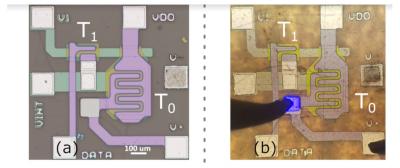Mikro Mesa develops a cost-effective 4" RGB mass transfer process
Taiwan-based microLED developer Mikro Mesa announced that it achieved a breakthrough in its microLED transfer and bond process, which now enables the company to transfer 2-5 um microLED chips using a large 4-inch stamp.
![]()
Mikro Mesa's new process can transfer color (RGB) vertically-structured microLED chips and create a full-color display. It can be used to create high-density dipslays - up to 1,800 PPI and be used to create large microLED TVs, over 55-inch in size. The new process is a low temperature one (below 200 degrees Celsius) and can be used on flexible substrates - and be also used to create transparent displays.





